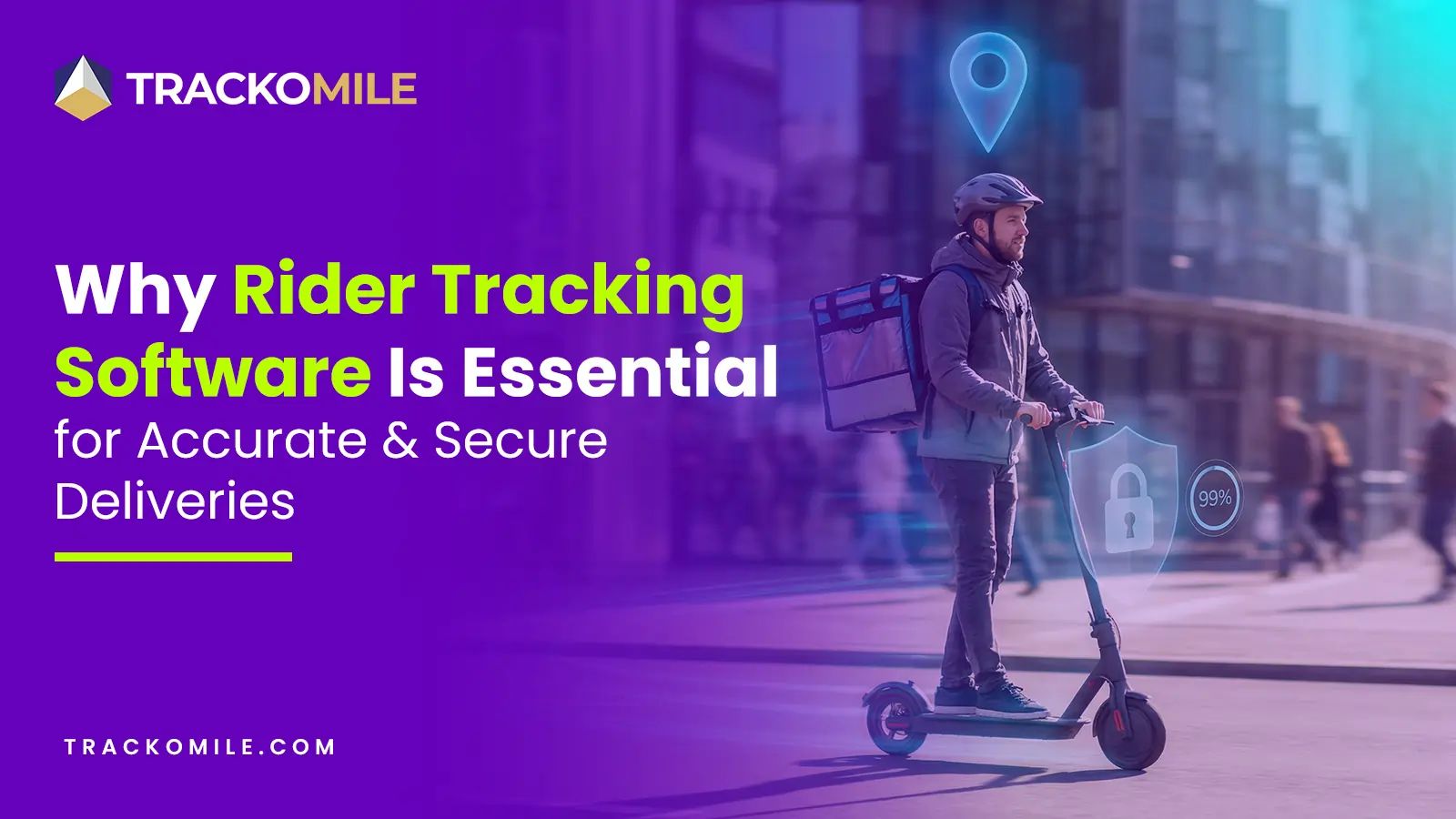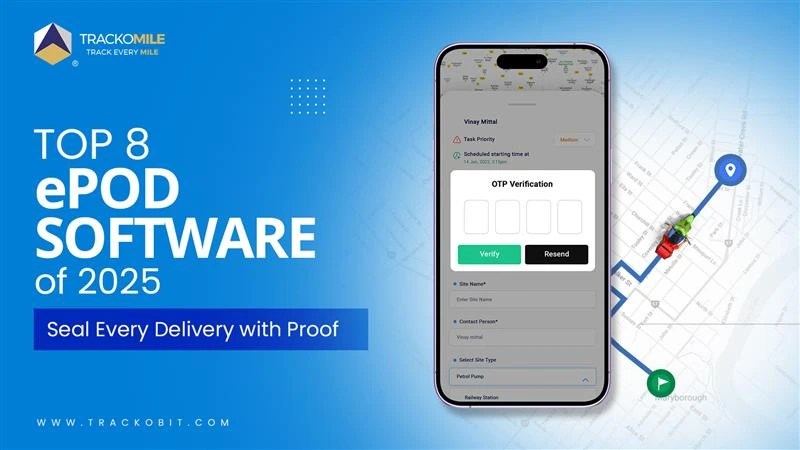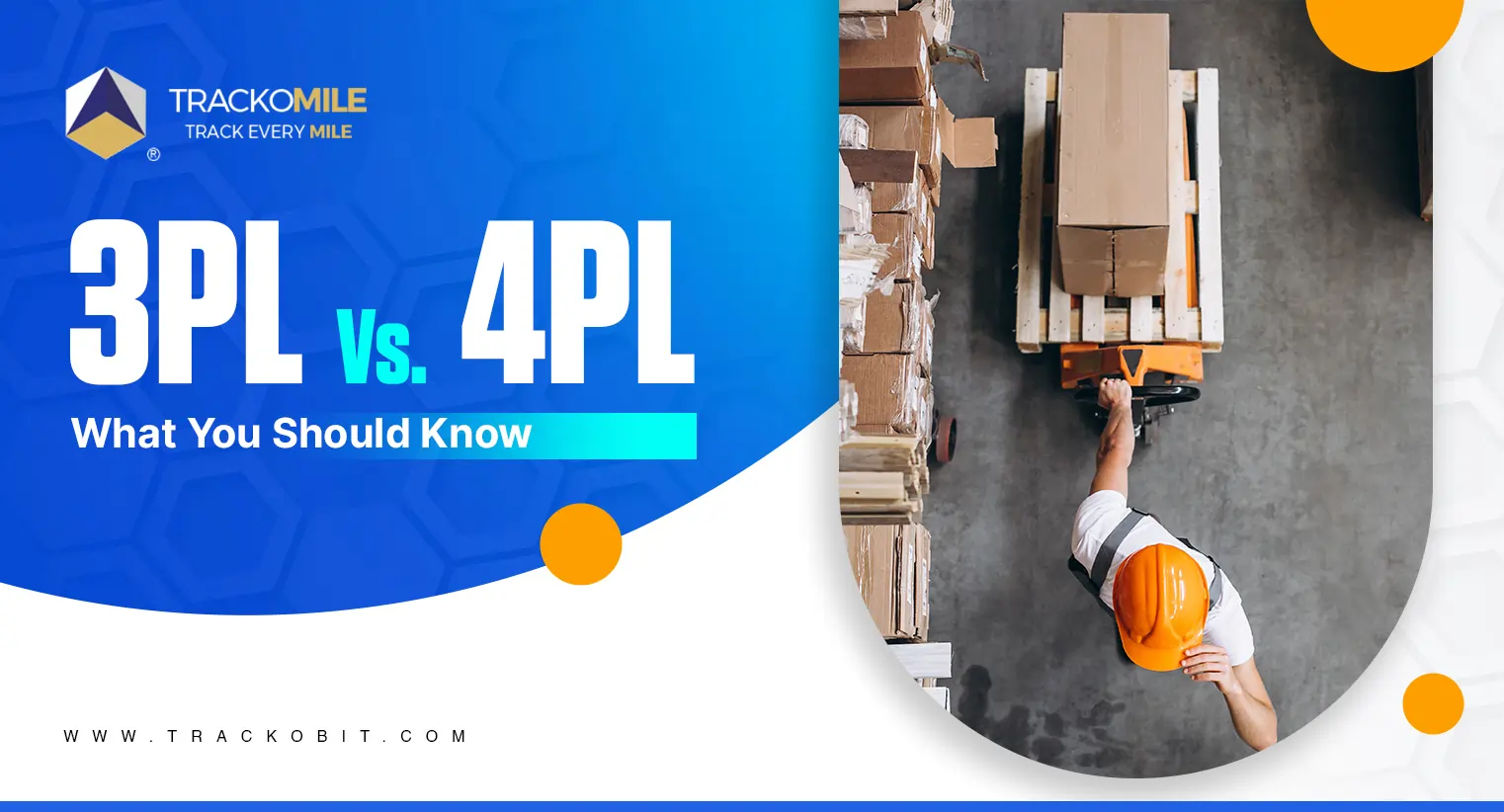-
TrackoBit
Manage commercial vehicles with the new-age Fleet Management Software
TrackoBit -
TrackoField
Streamline your scattered workforce with Field Force Management Software
TrackoField -
Features Resources
-
Blog
Carefully curated articles to update you on industrial trends. -
White Paper
Insightful papers and analysis on essential subject matters. -
Glossary
Explore an alphabetical list of relevant industry terms. -
What’s New
Get TrackoBit & TrackoField monthly updates here. -
Case Study
Explore the cases we solved with our diverse solutions. -
Comparisons
Compare platforms, features, and pricing to find your best fit.
-
About Us
Get to know TrackoBit: our team, ethos, values, and vision. -
Careers
Join the most dynamic cult of coders, creatives and changemakers. -
Tech Support
Learn about our technical support team and services in detail. -
Events
Check out the exhibitions where we left our marks and conquered. -
Contact Us
Connect with us and let us know how we can be of service.
Difference Between Dispatch And Shipment
- Author:Tithi Agarwal
- Read Time:9 min
- Published:
- Last Update: June 16, 2025
Table of Contents
Toggle
Shipment and dispatch are two common supply chain terms that play a huge role. However, they are also the terms people confuse and use interchangeably the most. Let’s eliminate the confusion.
Table of Contents
Toggle
It’s common for people to confuse dispatch with shipment and vice versa. Though closely related, these terms refer to different stages in the logistics process. Understanding their distinction is crucial for businesses looking to optimize operations, improve delivery times, and enhance customer satisfaction.
Dispatch involves preparing and coordinating the sending of goods from a warehouse, covering tasks like order processing, inventory management, and route planning. On the other hand, shipment focuses on the actual transportation of goods, encompassing the entire journey until they reach their final destination.
This article delves into the distinct roles of dispatch and shipment, highlighting their importance in ensuring the efficient movement of goods within the supply chain.
What is Dispatch?
The dispatch process includes coordinating and managing resource deployment to meet orders or assignments. It is also part of order receipt, verification, resource allocation, route planning, communication, real-time tracking, and documentation. Dispatchers promote effective operations and on-time delivery by allocating resources, optimizing routes, and communicating with drivers and others.
Key Components of Dispatch
- Order processing: This step involves receiving and preparing the order for shipping. This could entail confirming the order details, examining the stock, and preparing the package for delivery.
- Packaging: After processing the order, the items are normally packaged in suitable boxes or containers to safeguard them during transportation.
- Labeling: The packaging labels all pertinent information, including the recipient’s address, the shipping method, and any other specific instructions.
- Carrier selection: After that, the shipment’s carrier or shipping business is chosen based on the delivery date, destination, and mode of transportation.
- Transport: The shipment is delivered to the destination or the carrier’s distribution center depending on the shipping method and carrier selected.
- Tracking: During the dispatch process, the sender and the recipient can track the shipment’s status and projected delivery time by utilizing a tracking number or other identifying information.
- Delivery: Finally, the shipment is delivered to the recipient, typically by a carrier or delivery person, and the delivery is confirmed with a signature or other proof of receipt.
Importance of Dispatch in the Supply Chain
You might wonder why you should dedicate more time and resources to the dispatch part of the logistics chain. After all, some dissatisfied customers and delayed deliveries aren’t going to cause any harm. This is where you are wrong. Even a couple of angry customers and delayed deliveries can cause a company to gain negative reviews and increase operational costs. That is why having a well-oiled dispatch process is a necessity. Here are some of the important aspects of the process.
1. The Rising Demand for Same-Day Delivery
Same-day delivery grew between 2020 and 2021 in the United States, with delivery times becoming a critical factor for success. Obviously, dispatch plays a huge role in this success.
Because of this, more clients than ever ask for same-day delivery services, and more field service companies are now providing them. Consequently, you need to be able to react fast to be competitive.
Effective dispatch and management are essential to running a rapid delivery company. They guarantee efficient routes, seamless delivery operations, and cost savings. Field service companies must also be able to arrange qualified personnel for last-minute service calls.
2. High Customer Expectations
Customers anticipate receiving their products quickly and delivering them right to their doors. Nonetheless, the pressure on package delivery and shipping companies has grown as the demand for online orders rises.
It is imperative to emphasize how much customers want same-day delivery, yet only slightly more than half (50%) of retailers meet this expectation. This statistic significantly differs from the fact that over 75% of customers want and anticipate same-day shipping.
You, therefore, cannot afford to make errors that cause your dispatch process to lag if you want to grow in the digital era, keep your current clientele, and raise customer satisfaction levels. Dispatch management software can help with winning over customer satisfaction.
3. Lower Profit Rate Due to Competitive Industry
Thousands of other bigger businesses offer the same goods and services that your company provides. Getting favorable feedback and satisfied consumers can be difficult.
This competition has greatly reduced your company’s market share and profit margins. Using all of your earnings for delivery would be ineffective.
Fortunately, you may reduce dispatch and delivery costs and maximize your routes using an advanced dispatch management software. It will accomplish this by ensuring that you don’t need to hire more drivers and have fewer fleets of cars on the road.
What is Shipment?
The term “shipment” is often used to describe the process of moving goods from one location to another, whether by land, sea, or air.
In addition to physically handling the goods, administrative tasks may also be involved in preparing a shipment for transport. These may include obtaining necessary permits or documentation, such as customs forms or hazardous materials handling certificates. Coordinating with carriers or other transportation providers to arrange for the pickup and delivery of the goods may also be involved.
Key Components of Shipments
The shipment process is divided into two parts, which are:
1. Pre-shipping Process
- Gathering Shipping Information: This involves collating all the vital information for shipping the goods, such as the recipient’s contact information and address details. Henceforth, it is critical to ensure the accuracy of the shipping information to minimize delayed or lost packages.
- Packaging and Labeling: This involves selecting appropriate packaging content, such as bubble wrap or cartons, to safeguard the products inside the package. The package should also be labeled appropriately with information such as the recipient’s address and any special instructions, such as “Fragile Item” or “Handle with care.”
- Selecting Shipping Method: This involves selecting the most feasible shipping method based on the package size, weight, destination, and delivery time slot. Shipping options broadly comprise ground shipping, express shipping, and international shipping.
- Preparation of documents: This involves preparing the necessary documents, such as custom declarations, bills of lading, invoices, etc. Appropriate documentation is essential for international shipments as it helps to clear customs and avoid any legal battles.
2. Shipping Process
After the consignment is prepared for shipping, there are a number of steps to take when handed over to the shipping carrier for delivery purposes.
- Handing packages to the shipping carrier: involves physically delivering them to the carrier. The package is then scanned and entered into the carrier’s system for tracking purposes.
- Tracking Package: Shipment tracking involves monitoring the movement of the package as it heads towards its destination. The shipping carrier helps provide tracking information, such as the package’s current location, delivery status, and estimated delivery date, which is then shared with the end customer.
- Communication with shipping carrier: This involves constant communication with the carrier to clear any obstacles. This is handy in case the package is missing, delayed, or damaged.
- Estimated Delivery Time: This involves providing an estimated delivery time to the end customer based on the chosen shipping tracking method and carrier. The estimated time of delivery can, in turn, be shared with the customer via email, text message, or via a tracking link.
Importance of Shipment in the Supply Chain
Shipment is an important part of the supply chain because it connects the different steps of the process, from moving raw materials to manufacturing to delivering products to consumers. Shipping can help businesses in many ways, including:
1. Improving customer satisfaction
When shipping is well-managed, products can be delivered on time and in good condition, which can lead to increased customer loyalty and a better reputation for the company. According to a study, 87% of customers choose a product based on their delivery experience.
2. Reducing costs
Efficient transportation can help reduce the cost of goods, making them more affordable for consumers.
3. Creating contingency plans
When goods are delayed, a contingency plan can help businesses identify alternate suppliers or routes to ensure that products are delivered on time.
4. Maintaining transparency
Bills of lading can help ensure that cargo is documented and managed effectively throughout the shipping process, from the port to the vessel.
Key Differences Between Dispatch and Shipment
| Parameters | Dispatch | Shipment |
| Definition | Dispatch refers to sending goods or products from one location to another. It usually involves the preparation and organization required to send out items. | Shipment refers to the actual process of transporting goods from one place to another. It encompasses the entire journey of the goods from the point of origin to the destination. |
| Context | It is often used in the context of the initial step in the shipping process. For example, when an order is processed and ready to be sent out from a warehouse or a store, it is “dispatched.” | It describes the movement of goods once they have been dispatched. For instance, once the goods are loaded onto a truck, airplane, or ship, they are “in shipment.” |
| Focus | The focus is on the administrative and logistical aspects of preparing the goods for transportation. | The focus is on the movement and transportation of the goods. |
TrackoMile – The Bridge Between Dispatch and Shipment
TrackoMile is a powerful tool designed to optimize the coordination between dispatch and shipment in the supply chain. It ensures that goods are transported efficiently, timely, and with full visibility at every stage. Here’s an in-depth look at its features and examples of how they can be applied in real-world scenarios.
1. Real-Time Tracking
TrackoMile enables dispatch teams to monitor vehicle and shipment locations in real time.
Example: A logistics company transporting perishable goods can reroute vehicles instantly if delays threaten the shipment’s integrity.
2. Automated Alerts and Notifications
Automated alerts notify relevant parties at key shipment stages, such as departure, arrival, or delays.
Example: A retail company receives instant notifications when a shipment leaves the warehouse, reaches the halfway point, and arrives, allowing quick responses to any delays.
3. Route Optimization
TrackoMile suggests efficient routes using real-time traffic, weather, and road data.
Example: A courier service in a busy city uses optimized routes to ensure timely deliveries and reduce fuel costs.
4. Proof of Delivery (POD)
Drivers can capture digital signatures or photos as proof of delivery, instantly updating the system.
Example: A manufacturing company confirms delivery of high-value components by reviewing the recipient’s signature uploaded by the delivery agent.
5. Dynamic Dispatching
TrackoMile automates parcel pairing with riders and vehicles, thus reducing time spent in parcel sorting and allocating and delivery management.
Example: A parcel company can speed up its dispatching and delivery process by automatically sorting the orders and allocating them to riders.
6. Customizable Reports
TrackoMile generates customizable reports to meet specific business needs throughout the dispatch and shipment processes.
Example: A supply chain manager at a retail chain reviews weekly reports on delivery times and route efficiency to identify areas for improvement.
7. Load Optimization
TrackoMile optimizes vehicle load distribution, which helps in maximizing capacity and reducing trips.
Example: A wholesale distributor minimizes transportation costs by fully utilizing vehicle capacity for each shipment.
Conclusion
In the complex world of supply chain management, understanding the distinct roles of dispatch and shipment is crucial for optimizing operations. Dispatch focuses on the preparation and organization required to send goods, while shipment deals with the physical movement of these goods to their final destination. Both play pivotal roles in ensuring products reach customers efficiently and on time.
TrackoMile serves as the essential bridge between these two processes, offering advanced features like real-time tracking, automated alerts, and route optimization. By leveraging TrackoMile, businesses can streamline their dispatch and shipment operations, enhance efficiency, reduce costs, and improve customer satisfaction.
“Tools like TrackoMile are essential for staying competitive and achieving long-term success in today’s fast-paced supply chain industry.”
Tithi Agarwal is an established content marketing specialist with years of experience in Telematics and the SaaS domain. With a strong background in literature and industrial expertise in technical wr... Read More
Related Blogs
-

How Rider Tracking Software Improves Delivery Accuracy and Reduces Fraud
Tithi Agarwal December 8, 2025Rider tracking software improves delivery accuracy with real-time GPS visibility and automated ePOD. It also enables route optimisation and fraud…
-

Top Electronic Proof of Delivery (ePOD) Software in 2026
Tithi Agarwal September 25, 2025Electronic proof of delivery has become the backbone of modern logistics. Explore the top 8 ePOD software in 2026 and…
-

3PL vs. 4PL: Which is Best for Your Business?
Tithi Agarwal September 25, 2024Confused about choosing between 3PL and 4PL for your retail supply chain? Read this blog to find out which is…
-

What is Payload Capacity? Payload Capacity Vs. Towing Capacity
Tithi Agarwal September 10, 2024Payload capacity is the total weight a vehicle can safely carry, and it is crucial for safety and compliance. Exceeding…

Subscribe for weekly tips to supercharge your last-mile delivery.
Your inbox awaits a welcome email. Stay tuned for the latest blog updates & expert insights.
"While you're here, dive into some more reads or grab quick bites from our social platforms!"Stay Updated on tech, telematics and mobility. Don't miss out on the latest in the industry.
We use cookies to enhance and personalize your browsing experience. By continuing to use our website, you agree to our Privacy Policy.






































